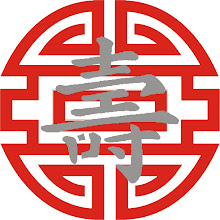

Tai Ji or Tai Chi, one of China’s traditional healing arts, has spread worldwide since its beautiful, focused movements were first practiced hundreds of years ago. Now a trained medical anthropologist at UTC is bringing a modified form of Tai Ji to people with physical disabilities and those who have to rely on a wheelchair either temporarily or permanently.By focusing on improving both their mental and physical conditions, Dr. Zibin Guo, UC Foundation Professor and head of the UTC Department of Sociology, Anthropology and Geography, may be taking this new innovation all the way to the 2008 Paralympic Games in Beijing.
The Paralympic Games, for people with physical disabilities, follow the Olympic games as the second largest sporting event in the world. The first Paralympic Games were held in Rome, Italy, in 1960 with 400 athletes from 23 countries. Originally only wheelchair athletes were invited to compete. Since that time, the Paralympic Games have grown dramatically.
In 2005, Guo proposed the promotion of wheelchair Tai Ji during the 2008 Beijing Paralympics. Guo’s proposal was very well received by the China Federation for People with Disabilities and Beijing 2008 Paralympics Committee. The two groups agreed Guo’s proposal provided a potentially effective way of promoting good health for people with physical disabilities.
“In October 2006, the two organizations invited me to Beijing to conduct a wheelchair Tai Ji workshop for some three dozen Tai Ji instructors and professionals from all over China who work in the organizations providing services for people with disabilities,” Guo said.
Guo’s workshop in 2006 was the first of its kind in China. In the spring of 2007, China Federation for People with Disabilities issued a policy statement to promote wheelchair Tai Ji in all provincial organizations responsible for providing services for people with disabilities.
“In the summer of 2007, organized by China Federation for People with Disabilities and Beijing 2008 Paralympics Committee, and funded by China Olympics Committee, eighty individuals with physical disabilities from all China were invited to Beijing to perform the wheelchair Tai Ji at the 2007 Beijing Olympics Cultural Festival,” Guo said. “As a founder of this program, I was also invited to Beijing and was put in charge of working with these eighty individuals in preparation for the demonstration.”
The Paralympic Games include six major classifications of athletes, including amputee athletes, persons with visual impairments, physical disabilities, cerebral palsy, spinal cord injuries, and Les Autres - athletes with a physical disability not included in the categories mentioned, for instance, those with Muscular Dystrophy. The number of athletes participating in Summer Paralympic Games has increased from 400 athletes from 23 countries in Rome in 1960 to 3806 athletes from 136 countries in Athens in 2004.
The Olympic Games and the Paralympic Games have always been held in the same year. Since the Seoul 1988 Paralympic Games, they have also taken place at the same venues. On June 19, 2001, an agreement was signed between the International Olympic Committee and International Paralympic Committee to ensure the host city for the Olympic Games is also obliged to host the Paralympics. Beijing is the host city for 2008 Olympic Games from August 8-24 and the city will also host the Paralympics from September 6-17.
“Not only has the wheelchair Tai Ji program been promoted nationwide in China, the Beijing 2008 Olympic Committee and the Paralympics Committee are also considering to include a wheelchair Tai Ji demonstration by some 500 people who are with disabilities in the opening ceremony of 2008 Paralympic Games,” Guo said. “I proposed that such an event would provide a powerful inspiration for people with disabilities from all over the world.”

Nessun commento:
Posta un commento